The way we interact with our homes is very different to how previous generations did things, both in terms of how much time we spend in certain rooms and our preferences towards more open-plan layouts.
So if you’re renovating an older property, chances are you’re planning to reorganise the internal layout to better suit modern life, whether that’s to create larger rooms, make better use of the flow of natural light or to fully incorporate a new extension.
Which internal walls can be knocked down?
Before you go ahead planning which walls are going to be altered or removed completely, you’ll need to do some investigation into their makeup and whether they play an important structural role in supporting any upper storeys.
The most important thing to establish is whether the wall in question is working to carry the weight of something above it; load-bearing sections could be a structural necessity for ceilings, floors, other walls or the roof.

This renovation and double storey extension building project illustrates beautifully how a home can be transformed by appointing a skilled architect, an independent project management company and a well organised, quality construction team. |
However, it’s not always easy to tell and tapping it to see if it sounds hollow (and therefore a simple stud partition rather than brick) won’t necessarily provide an answer. Although most load-bearing walls built before 1970 were solid brick, this wasn’t universal.
The only way to guarantee you understand the makeup and purpose of an internal wall is to get a structural engineer involved.
Your builder is likely to have a contact; otherwise you can find registered professionals via the Find a Structural Engineer search tool on the Institution of Structural Engineers website.
“The main structural wall in some Victorian properties is made out of timber with plaster and lath; whole modern timber frame buildings also rely on walls that sound insubstantial when knocked,” says Andrew Mulroy, director at Mulroy Architects. “In addition, some walls have no structural function but work to protect the occupants in the event of fire.”
“If the wall is load-bearing then the structural engineer will need to calculate what needs to be done to counteract its removal. Unless the opening is smaller than 1.5m, then a steel beam is required,” says Lucas Vueno, site foreman with London Builders. Your contractor and steel manufacturer will work to the engineer’s calculations.
Explore our gallery of Victorian Layout Ideas to Inspire your Renovation Project:
If you discover that a wall isn’t doing anything other than creating division, then it shouldn’t be overly complicated to remove. However, Lucas advises against homeowners trying to knock down the wall themselves.
“Even when a structural engineer doesn’t need to be involved in the removal, there could still be piping and electrics in the wall, so it’s better to get a reputable builder in,” he says.
Planning permission for knocking down internal wallsYou’re unlikely to need planning approval to knock down or change internal walls. Although this isn’t always the case, especially if it’s a listed building or positioned in a conservation zone – check with your local authority if you aren’t sure. Knocking down walls & Building RegulationsSome works will require a Building Regulations application. This is because the property’s structural and fire performance might be affected. “You may also need to obtain a party wall agreement with neighbours if the work will have an impact on another property,” says Andrew. “It’s crucial to have an asbestos survey before any demolition takes place, too.” This is particularly relevant to homes built or refurbished before the year 2000. |
Knocking down a load-bearing wall
Just because a wall is holding up something above it, doesn’t mean it can’t be taken down – but removing it won’t be as straightforward as for a non-structural one.
The level above will need to be temporarily supported before any works commence, probably with acrow props, otherwise you risk the building collapsing. A brand new permanent support will be needed to spread the load of the absent wall; a steel beam is a common solution, but there are alternatives.
“Depending on the nature of the existing building, timber beams may be used – a quicker and cheaper method of forming a smaller opening,” says Andrew. “There are also timber/steel composite versions for larger spans. And the Romans used arches to form openings in masonry walls that have stood for centuries.”
Explore our gallery of Interior Design Ideas for Exposed Beams
You might also need to install additional supports at either end of the new beam. “The ends must bear on a substantial portion of wall at each end to transfer the loads of the building foundations safely,” says Andrew.
A building inspector will check that the support accords with the calculations before it can be finished with fire board (which is needed for Building Regs), plastered and painted.
Besides the time it will take to get the structural engineer in and calculations drawn up, you can expect the job to be completed within a week.
Once finished, it will need to be signed off by the building inspector who will issue a building approval certificate – keep hold of this as it will be important if you sell the property in the future.
Design advice for knocking down internal walls
In order to comply with fire regulations, the new structural support will need to be boxed in, which will typically result in a drop of 200mm-250mm in ceiling height. This is why you often see lowered strips on the ceilings of extended homes with open-plan interiors.
Some homeowners like this feature as it tells a story of the building’s past, others prefer a flush finish throughout to create a more even look.
An alternative is to lower the whole ceiling below the new beam so it’s concealed – but you’ll need enough head height to make this a feasible option. Another is to recess the support in to the ceiling, but this could increase costs.
It might be that removing the wall unearths a difference in floor levels between rooms. This can be fixed with a step, which will help with zoning; if the disparity is very minor then slight floor levelling might be enough.
|
Browse our directory to find the right professional for your next project
|
How much does it cost to knock down walls?
The bigger the wall, the more cost involved, both in terms of materials and labour. Don’t forget there’s also the structural engineer’s fees, skip hire, decoration and building inspector to budget for.
Lucas suggests removing a load-bearing wall could cost around £1,000, excluding decoration.
However, there might be elements that need to be moved that will end up increasing the overall price – for instance, light switches, plug sockets and radiators.
Don’t forget to budget for new flooring, too. It’s also always worth contacting your home insurers to check the work is covered.
Top image: This renovation and extension by Mulroy Architects involved removing several load-bearing walls; a stepped design has helped with ceiling height consistency in the different zones [Image: Joakim Boren]
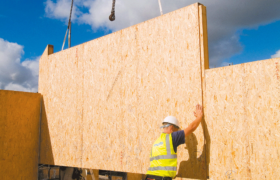
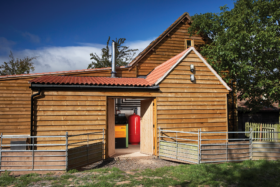
































































































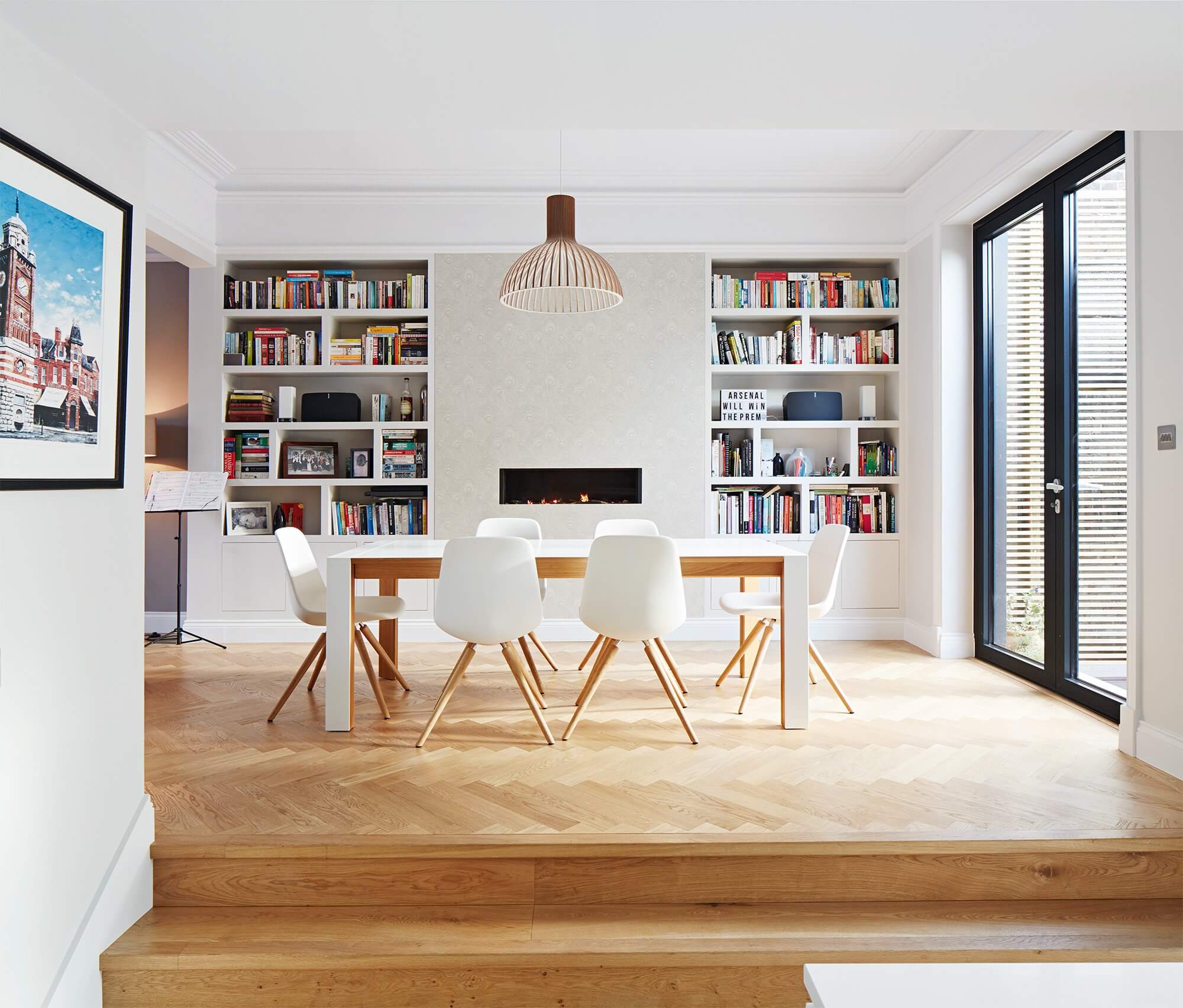
 Login/register to save Article for later
Login/register to save Article for later





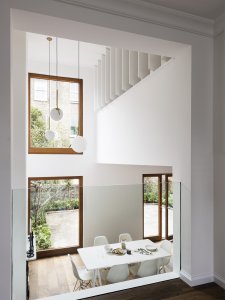



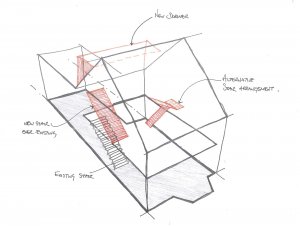
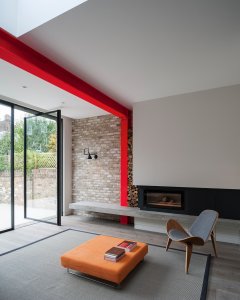
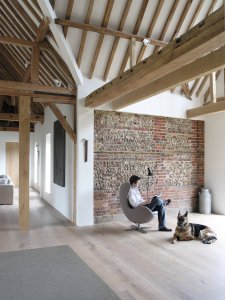


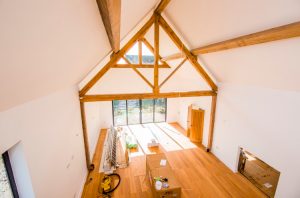



 Find architects and house designers to help you translate your ideas into viable drawings and plans for a bespoke dream home that’s tailored to your requirements. Explore what they offer and read about their successful projects.
Find architects and house designers to help you translate your ideas into viable drawings and plans for a bespoke dream home that’s tailored to your requirements. Explore what they offer and read about their successful projects.










